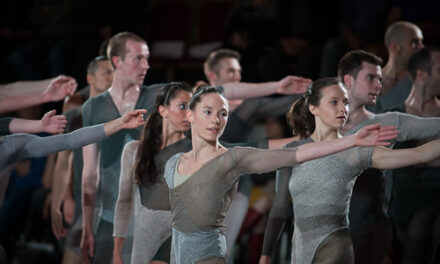The fine acoustics of the assembly hall of Carol Woods Retirement Community resounded with revolutionary and innovative keyboard works of Beethoven, Schumann, and Chopin. The engaging performer was Mimi Solomon, a lecturer in the Music Department of the University of North Carolina at Chapel Hill. The cum laude ;of Yale received her master of music degree from the Juilliard School of Music and has a multifaceted career as a chamber musician, soloist, and teacher throughout the United States, Europe, China, and Japan.
The concert opened with Sonata No. 12 in A-flat, Op. 26 (1800-01) by Ludwig van Beethoven (1770-1827). Its four movements represent a revolutionary break with the existing model for sonata form. They are Andante con variazioni, Scherzo, allegro molto, Maestoso andante, and Allegro.
Like her entire program, Solomon dispensed with score and brought an immediacy to her performances. She brought out an almost improvisatory quality to the first movement, playing with warm tone, refined control of color and dynamics. The pert, fast paced episode before the restatement of the theme was most effective. The articulation of the humorous syncopations of the scherzo was especially clear. The transition from the funeral march-like slow movement to joyous, vivacious finale was handled beautifully.
Next came two selections from Fantasiestücke, Op. 12 (1837) by Robert Schumann (1810-56). The composer personified his dual nature as the dreamer Eusebius contrasted with the fiery Florestan. These are perfectly displayed in Solomon’s choices, “Des Abends”(Twilight) and “Aufschwung”(Soaring).
Solomon wove a wistful, mellow melodic line evocative of an evening’s quiet reverie in the first. All the stops were pulled out for chromatically rich, fiery second selection.
Solomon prefaced her concluding work by saying Frederic Chopin’s favorite Beethoven Sonata was the Twelfth which opened her recital. Chopin’s exploitation of Beethoven’s liberating model is on display throughout the four movements of his Sonata No. 3 in B minor, Op. 58 (1844). They are Allegro maestoso, Scherzo, Largo, and Finale: Presto non tanto.
Solomon gave a finely judged idiomatic performance with gorgeous phrasing and a wide palette of tonal color. The first movement’s two themes, one dominated by rhythm and the other largely melodic, were impressively contrasted. Her performance of the trio of the scherzo was a highlight of the evening. The poignant, singing line of the largo was spun out beautifully. There was no lack of power or rhythmic vigor in her rousing treatment of the finale.
Carol Woods’ large audience gave Solomon repeated recalls with a sustained standing ovation.











